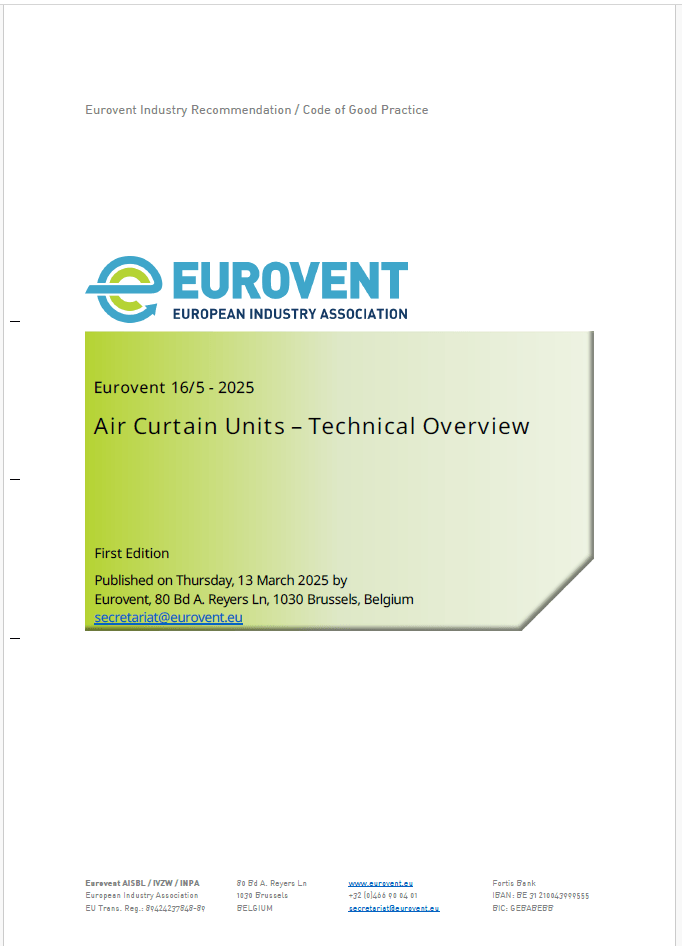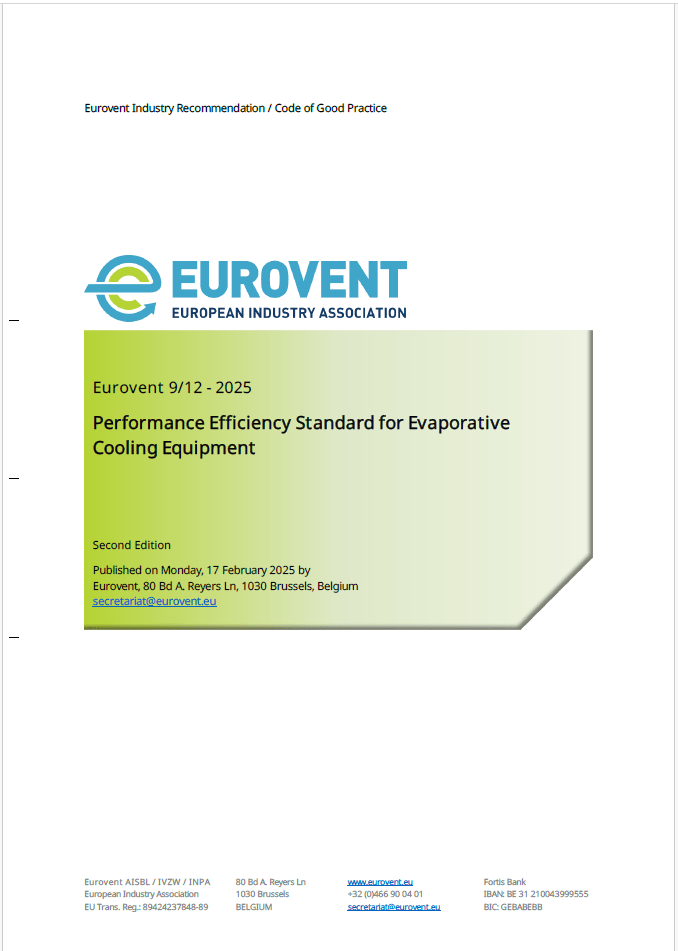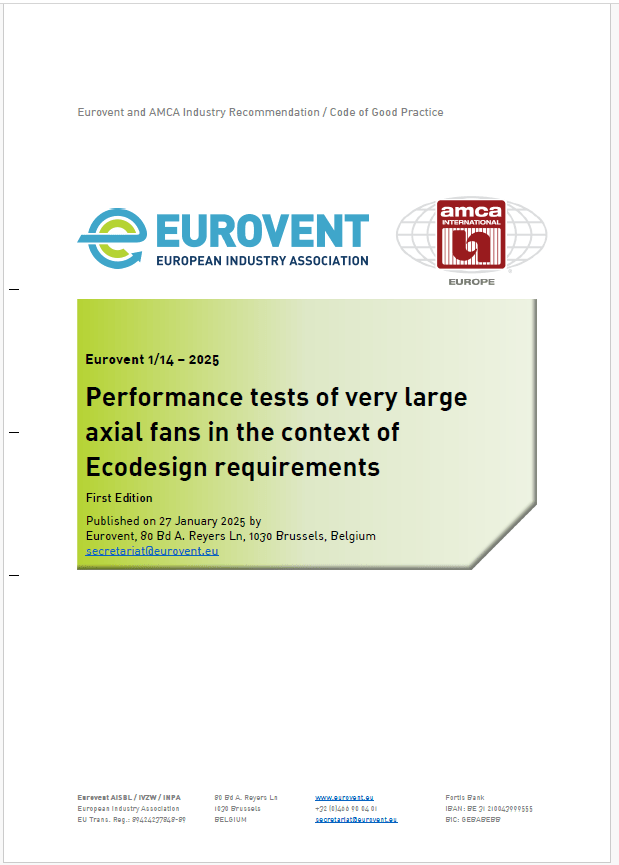Several years ago, the UAE implemented a regulation which intended to limit the lowest temperature set point to 20 degrees Celsius. While a laudable attempt to cultivate more conscious energy consumption, the regulation has its difficulties. Eurovent Middle East speaks to experts to know more about this requirement and its effects.
In its constant drive towards sustainability, the UAE, some years ago, had implemented a paragraph requiring temperature controls to be limited to 20 degrees C. The regulation was created as part of the country’s strong initiative to pursue energy efficiency and sustainability. In its last revision, the regulation also required proof that the unit would cut off when the room temperature reached 20 degrees. While positive in its intention, the requirement raised concerns among manufacturers.
A challenging limit

Markus Lattner, Managing Director of Eurovent Middle East, explains the background: “Many people use air conditioning to its maximum, regardless of the actual need and going beyond comfortable levels. The best indoor temperature setting for maximum comfort lies between 20- and 24-degrees C. However, many people still set the controls down to below 20, which is just a waste of energy and is, in fact, not even healthy for occupants. The regulation intends to enforce a technical stop to such practises.”

Explaining the regulation in detail is Srinivasan Rangan, Director of Demand Generation, Strategy and Regulatory Affairs, Rheem Manufacturing: “Thermostats for the ducted and non-ducted DX Air conditioners below 65.000 Btu are required to have factory set temperature limits of 20 degrees C with a factory set lock or cut off limit at 18 degrees, which prevents it from being used below that point,” he says, referring to the UAE.S 5010-1 regulation for residential air conditioning.
From a technical perspective, there is no problem with limiting the set point to 20 degrees C, says Luay Ghussein, Senior Director of Engineering, Taqeef. “Whoever can set the limit at 18 degrees C, can set the limit at 20 degrees C,” he says, stressing that the complexity comes in doing this in the face of the lack of harmonisation in the region. Ghussein explains: “When you do something for a relatively small market, such as the UAE, that becomes a challenge to manufacturers. Because to make any price affordable, manufacturers worldwide try to unify their products so there is some compatibility crossover and to ensure the availability of spare parts. This is why it is much easier if the whole region has the same one. The limitation to one market is a barrier, and manufacturers aim for the best solution in terms of commercial viability, rather than the ideal one.”

Elaborating further, Ghussein says an important commercial consideration would be stocking material in the UAE. “With this regulation, we would have to manage the stock to know which controls can and cannot be sold within Dubai, and it becomes a bit of a logistics problem,” he says. “This could lead to an increase in price and situations wherein the air conditioning unit with controls that go to 20 degrees C will be more expensive than the ones that have the limit for 18 degrees C for no other reason than to absorb the cost of logistics and cost of compliance because there will be no other choice than to charge the end consumer.”
Economies of scale, Ghussein explains, will mean the market with fewer units will always experience higher pressure in terms of price. “The market will be most viable and able to comply if such a regulation can be harmonised throughout the region, which is what we urge the bodies to consider,” he says.
Areas of improvement
Another point of possible contention regarding the regulation, Ghussein explains, is the testing method that should be used. “There is no standard that defines the test method they want to have or use,” he says. “AC discharge temperatures (air leaving the AC) are typically 12 or 13 degrees C to achieve a room temperature of 20-24 degrees C, as air in the room must mix. The mix will give it the 20 degrees C temperature, not the discharge, and it will not be unified in the entire room. So, it is about where you measure that 20 degrees C. The world usually tests it on the return air temperature, but the current regulation is unclear about this.”
This is also a concern for Rangan. “Accurately measuring room temperature and controlling the air conditioning unit can also be a technical challenge to ensure compliance,” he says. “A testing standard and protocol must be clearly defined, including the location of sensors and measuring positions at return air temperature. We must consider the techno commercial and practicality that any password control for 20 degrees C is applicable for 18 degrees C, so keeping two separate provisions is challenging.”
Ghussein underlines again that the only well-known standard tests the temperature based on a certain point at the return air. “Worldwide, this is how the set point is tested,” he says. “It is not just any particular point. It is important for the regulation to be easily enforceable without burdening manufacturers. That means they do not define a different test method or set point other than the globally accepted standard, or else it would not be realistic. The regulation is one aspect, but the testing method is equally important; the testing method should be the same for any set point, making the manufacturer’s life much easier.”
Rangan says another challenge is defining the room size and boundaries, especially for irregularly shaped or open-plan spaces. “Managing user behaviour is also important to ensure compliance with regulations, as it can affect the temperature in the room,” he says. “Overcoming these challenges requires understanding the regulations and air conditioning systems, as well as effective communication with users.”
Working towards ease of enforcement
Ensuring that test methods echo or subscribe to global accepted methods is not only critical to support manufacturers in the region, having a regulation that may be difficult to enforce can also have long-term implications. “If a regulation requests for something impossible to test for and especially difficult to comply with, people may cut corners,” says Ghussein. Rangan also points out that there is a potential risk that regulations would be bypassed through the use of non-compliant thermostats available in the free market, as they are sometimes procured separately by customers or via e-commerce. “There is a need for uniform regulation application on other cooling systems such as chilled water systems.”
Rangan further underscored that a lack of compliance and reduced accountability could lead to decreased safety and comfort for occupants, increased costs for individuals and businesses, and negative environmental impacts. “A lack of enforcement can erode confidence in regulatory systems, leading to a loss of trust for regulations,” he says.
How this regulation will be managed within Building Management Systems (BMS) is another important aspect that needs to be addressed. Ghussein and Rangan believe it will add another layer of complexity to the discussion. “It is unclear how they will regulate all the BMS coming into the market,” Ghussein says. “There would be a need to connect the unit to the BMS, the system should also ensure that the AC does not go below 20 degrees C.” Currently, adds Rangan, remote or BMS controls are not regulated.
Recommendations on the best way forward
Without a doubt, the regulation will go a long way in achieving greater savings. “As an industry, we support the regulation to that it saves energy,” Ghussein reiterates. “In some countries, such as Japan, building codes have even been forbidden going below 24 or 25 degrees C, which underscores the clear value behind having such a regulation. So yes, it is good to have such a regulation. The question is, is the current requirement effective and working?”
Rangan says that the importance of clearly defining testing standards and protocols for all thermostats entering the UAE should be emphasised. “The regulations should be uniformly applicable to all types of thermostats, and the exceptions process should be clearly defined,” he says. “This is because some end-use applications may not be practical to apply the regulations, for example, cold storage, pharmaceutical or hospital applications. Additionally, suppliers should be well protected in case of misuse of the thermostat settings in the field.”
According to Rangan, several measures can improve compliance with regulations related to air conditioning units not cooling below a certain temperature. “Clear and consistent definitions of key terms and standardised measurement protocols are critical to ensuring effective implementation,” he says. “Certified testing organisations should also be required to test compliance with the regulations, and the regulations should be part of broader energy efficiency standards. Public education and outreach can also help raise awareness and promote compliance.”
Lattner sums up the concerns of the industry, “The regulation in its current form is not achieving its goals. It does not address applications where you need lower temperatures, leads to unfair competition in the market and leaves way too much room for circumventions. People will not understand why their AC cannot go lower when at the next location, the room temperature is clearly lower due to non-regulated BMS systems or a third-party remote control. We absolutely support its intention, but this issue may better be addressed through building codes and public awareness campaigns.”


















